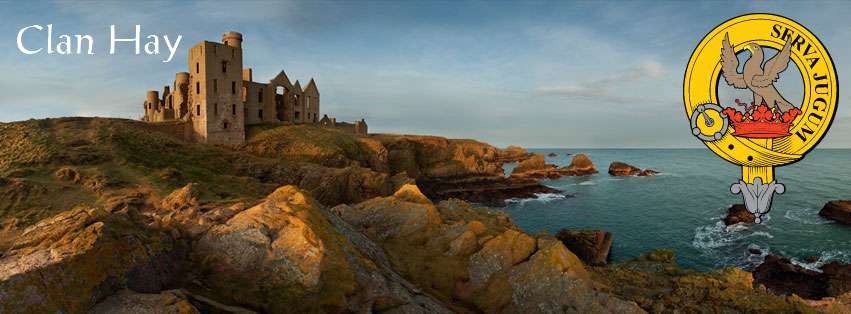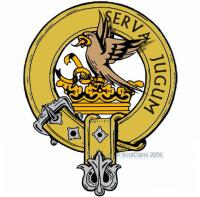
Clan Hay
The de la Hayes were a powerful Norman family, princes of whom came with William the Conqueror to England in 1066. The name means hedge, and was not translated into the English language. In Gaelic, however, the nameholders became Garadh, a word encompassing hedge, wall, dyke and also a defensive stockade. To this day the Chief of Clan Hay is known as Mac Garaidh Mor.
By 1160 the Hays were well established in Scotland. William de la Haye was cupbearer to Malcolm IV, becoming the first lord of Errol, and husband of Eva, Lady of Petmulin, a Scoto-Pictish heiress. Their son David integrated the line further into the ruling classes by marrying Ethna, daughter of the Earl of Strathearn, one of Scotland’s most ancient earldoms.
Sir Gilbert Hay, 5th Lord of Errol, was a comrade-in-arms of Robert the Bruce at numerous battles, including Bannockburn. He was rewarded with the powerful hereditary position of Constable of Scotland, and given much of the lands of Bruce’s defeated enemies the Comyns, including their stronghold Slains, on the Buchan coast.
When the Reformation was forced upon the country, the Hays, with other Catholics such as the Red Douglases and the Gordons, attempted to negotiate an alliance with Philip II of Spain. Ultimately, Errol and Huntly were declared outlaws by James VI, and both had to go into exile, while the King personally supervised the demolition of Slain Castle, leaving it as it can still be found today.
Whether better for his soul or not, Errol found changing his religion better for his position, and returned from exile into royal favour. The Order of the Thistle was given by James VIII, the ‘Old Pretender’, to the 13th Earl of Errol for his support in the 1715 rising. His sister and successor, Mary, was deeply involved in the administration of the Jacobites, using Slain Castle’s ruins as a contact point. She brought the Hays out to fight for Bonnie Prince Charlie in 1745. When she died in 1758, her great-nephew, James Boyd, inherited all, taking on the name Hay, the Earldom and the Chiefship.
James would have been the Earl of Kilmarnock also, had the title not been removed from his father, along with his head, for treason in 1746.
The 19th Earl, William Hay, founded the fishing village of Port Errol, and was known for his generous support of fishermen’s widows.
Other branches of Hays include the Hays of Yester who became the Marquesses of Tweedale.









